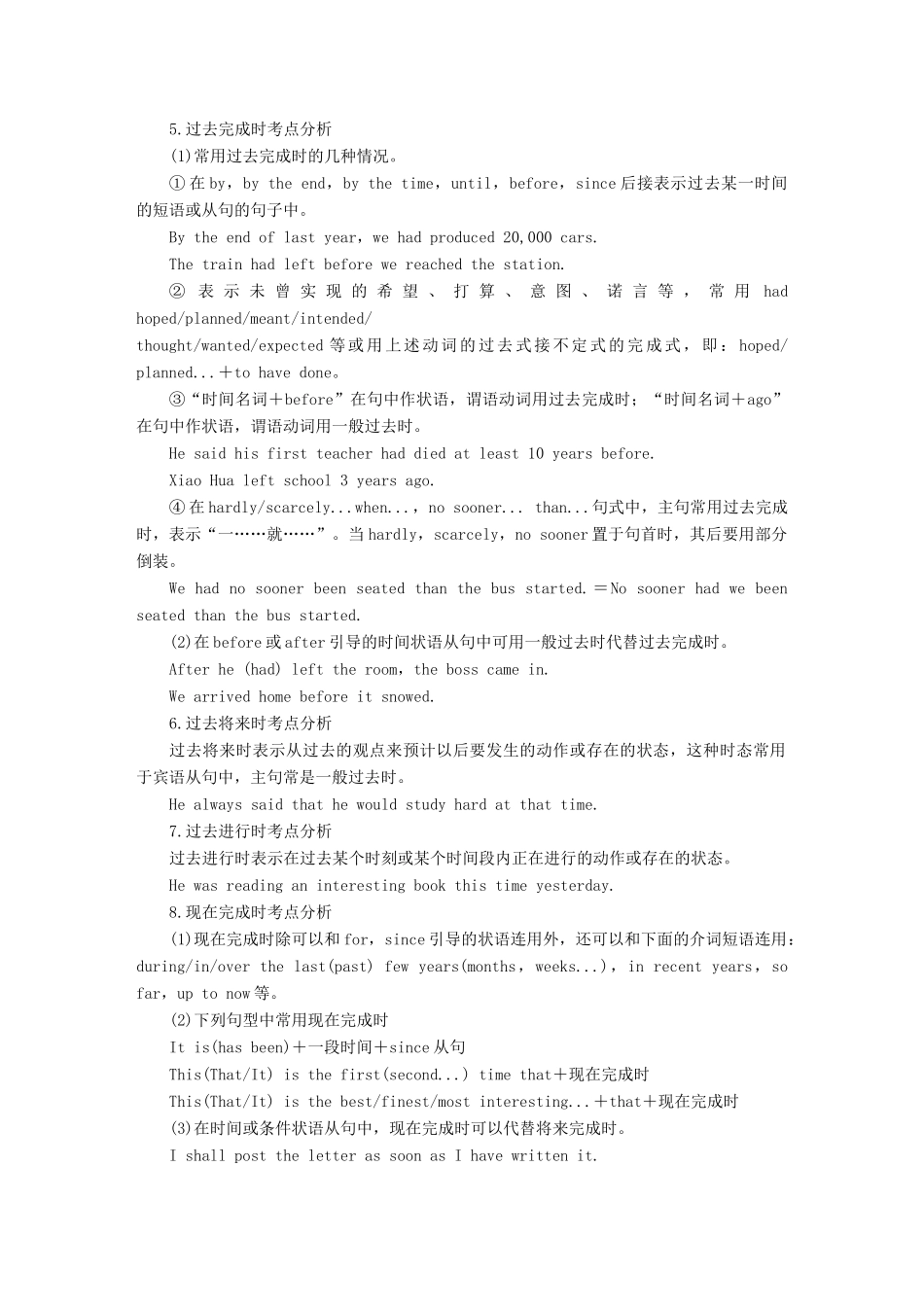专题一 动词的时态和语态动词时态的核心考点1.一般现在时考点分析(1)表示客观事实或普遍真理(不受时态限制)。Time and tide wait for no man.(2)表示现状、性质、状态时多用系动词或状态动词;表示经常或习惯性的动作,多用动作动词,且常与表频率的时间状语连用。They always care for each other and help each other.(3) 表 示 知 觉 、 态 度 、 感 情 、 某 种 抽 象 的 关 系 或 概 念 的 词 常 用 一 般 现 在 时 :see,hear,smell,taste,feel,notice,agree,believe,like,hate,want,think,belong to,seem 等。Smith owns a car and a house.All the students here belong to No.1 Middle School.(4)在时间、条件状语从句中常用一般现在时代替将来时。但要注意由 if 引导的条件状语从句中可以用 shall 或 will 表“意愿”,但不表示时态。If you will accept my invitation and come to our party,my family will be pleased.(5)少数用于表示起止或转移的动词如come,go,leave,arrive,fly,return,start,begin,open,close,end,stop 等常用一般现在时代替将来时,表示一个按规定、计划或安排要发生的动作。当 be 表示根据时间或事先安排肯定会出现的状态时,只用一般现在时。The shop closes at 11:00 p.m. every day.Tomorrow is Wednesday.2.一般过去时考点分析(1)一般过去时的基本用法:表示过去的事情、动作或状态,常与表示过去具体的时间状语连用(或有上下文语境暗示);用于表达过去的习惯;表示说话人原来没有料到、想到或希望的事通常用过去式。We met her in the street yesterday.When he was young,he took cold baths regularly.(2)如果从句中有一个过去的时间状语,尽管从句中的动作先于主句发生,但从句中的谓语动词仍用过去时。He told me he read an interesting novel last night. (3) 表 示 两 个 紧 接 着 发 生 的 动 作 , 常 由 以 下 词 语 连 接 , 用 一 般 过 去 时 。 如 :but,and,when,as soon as,immediately,the moment,the minute 等。The moment she came in,she told me what had happened to her.He bought a watch but lost it.(4)常用一般过去时的句型。Why didn’t you think of...


